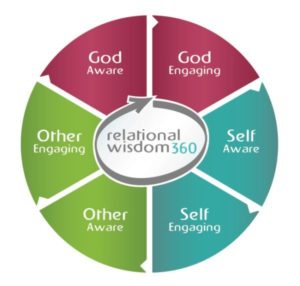 Cinderella Man is one of my favorite movies, largely because it stars Russell Crowe, one of my favorite actors. But what I really love about this movie is how powerfully it illustrates key elements of relational wisdom.
Cinderella Man is one of my favorite movies, largely because it stars Russell Crowe, one of my favorite actors. But what I really love about this movie is how powerfully it illustrates key elements of relational wisdom.
The story is based on the life of James J. Braddock. Once a successful heavyweight boxer, Braddock was reduced to poverty by a broken hand and the Great Depression. After losing their home, he and his family were forced to live in a rundown, one-room basement apartment. Like so many other men, he went out every morning desperately looking for work so he could bring his wife enough money to buy food for the next meal.
In the clip you will watch, he is returning home empty-handed. He knows his family will go to bed hungry once again. He is greeted by even worse news: his son has been stealing food. In spite of all the frustrations he must be feeling , he responds to his son with remarkable relational wisdom.
As you watch this scene, pay careful attention to the relational dynamics and emotional cues. Try to imagine how discouraged and powerless this man must feel. Watch Russell Crowe’s body language and posture. Listen to his tone of voice. Note his facial expressions. Pay attention to his use of pronouns. Draw on his example to improve your own ability to discern emotions, desires, and needs in yourself and others, and to respond to them in constructive ways.
As you watch this clip, be sure to click the full screen icon in the lower right corner of the movie screen so you can better see the subtle body language and emotional cues of this moving exchange. (If screen does not appear below, click here.)
Debrief
If you were watching carefully, you will have noticed several excellent examples of relational wisdom. Let’s consider a few of them.
 Crowe portrays a father who understands and restrains his own emotions, even in a highly stressful situation (self-aware and self-engaging). When he learns his son has stolen, he resists the temptation to jump to conclusions and give in to pride and anger (“How could you do this to us? You’ve disgraced our family! I’ll teach you not to steal!”).
Crowe portrays a father who understands and restrains his own emotions, even in a highly stressful situation (self-aware and self-engaging). When he learns his son has stolen, he resists the temptation to jump to conclusions and give in to pride and anger (“How could you do this to us? You’ve disgraced our family! I’ll teach you not to steal!”).
By patiently holding his tongue, he allows his son time to reveal the reasons behind his actions (other-aware). In doing so, he models one of the most appealing qualities God has built into us as his image-bearers: “love is patient and kind” (other-engaging).
Crowe demonstrates marvelous self-control throughout the scene. When he learned the reason for his son’s stealing, his body language revealed a deep inner agony. He looked up and down the street, suppressing a scream of anger and frustration, not at his son’s behavior, but at a world that was crushing his family and at his own inability to provide for those he loves (more self-awareness and engagement).
Crowe went from standing erect, to leaning over, to kneeling as he spoke to his son. This reduced physical intimidation and drew them closer to each other, both physically and emotionally.
More importantly, his posture physically illustrated the difference between law and grace. As he spoke “the law” to his son (“We don’t steal”), he was still above him, but when he spoke grace (“I promise we will never send you away”), he was kneeling so low that his eyes were actually beneath his son’s, persuasively communicating humility, kindness, and love (superb other-awareness and other-engagement, which continues throughout this scene).
Crowe moved smoothly from the first and second person singular (“I” and “You”) to the first person plural (“We” and “us”). In doing so, he sent the clear message, “You are not excluded from my heart or love; we are a family and we are in this together.”
His tone of voice consistently conveyed gentleness and respect. He was firm but his words were not fashioned to sting and punish. He spoke the truth directly yet kindly, reminding his son of their family’s shared values and dignity, and inviting him to reclaim his place in that circle with a simple promise. A superb illustration of Proverbs 12:18: “There is one whose rash words are like sword thrusts, but the tongue of the wise brings healing.”
Crowe brought healing by conclusively resolving the burning issue in his son’s heart, the fear of being sent away for lack of food. Demonstrating excellent other-engagement, he gave a simple but life-changing promise, which echoes God’s covenant with us, “I will never leave you nor forsake you” (Heb. 13:5).
Crowe choked up as he made his promise, reinforcing his words with subtle yet convincing emotional cues. He communicated love, forgiveness, and commitment with his words, tone of voice, eyes, facial expression, and posture; he used every means God had given him to reach his son’s mind and heart and to reassure him of his complete restoration (compelling other-awareness and engagement).
Sensing the genuineness and safety of his father’s love and forgiveness, his son burst into tears from sheer relief and threw himself into his father’s arms. In a perfect climax, this wise and loving father embraced his son, lifted him up, and reassured him with these compassionate and redeeming words, “It’s OK, kid. You got a little scared. I understand.”
These are words that a son will remember and cherish to the day he dies. I know, because my father spoke almost these exact words to me when I was ten years old and just as scared as the boy in this scene. Those words ring in my ears to this day, reminding me of my father’s love, compassion, and wisdom.
All Great Stories Have the Same Elements
One of the reasons that Cinderella Man is such a powerful movie is that it follows the classic formula for a great story. Allow me to explain.
 Whether we’re watching Gone with the Wind, Les Miserables, The Hunger Games, or Downton Abbey, the attractive force that glues us to a movie screen is the relational dynamics between the major characters as they contend with each other and the challenges that surround them.
Whether we’re watching Gone with the Wind, Les Miserables, The Hunger Games, or Downton Abbey, the attractive force that glues us to a movie screen is the relational dynamics between the major characters as they contend with each other and the challenges that surround them.
In great movies, these dynamics always lead to some form of redemption (personal improvement, restoration, or reconciliation). This process revolves around a hero who is driven by a desire for something he sees and a need for something that he may not discern until the end of the story.
The hero is blocked by both an inner flaw and some form of external adversary (often representing an opposing worldview). This opposition intensifies to the point that the hero nearly fails in his quest.
But then near the climax he finally realizes that what he desired was not what he really needed. This self-revelation is the main point the story-teller is trying to convey to us, the ultimate theme or moral of the story. This revelation is either the result of the final confrontation or the means by which the hero finally gains a victory, bringing the story to a satisfying conclusion.
Think of your favorite movies (or books), and you will see these key story elements. Why are they so universal? I believe it is because they echo the greatest story in the world, our own redemption by God.
We all pursue desires that we think will make us successful and happy. But our adversary, Satan, and the inner flaw of our sin block us from finding fulfillment. As long as we seek our own ends and depend on our own efforts, we continue to fail. But when we finally see the emptiness of our desires and the futility of our efforts, and realize that what we need is the grace and forgiveness that God offers to us through the gospel, we finally achieve victory over our adversary and our sin, and experience redemption and reconciliation with God.
These key elements of God’s redemption story are woven into the tapestry of creation and echo through everyday life. Therefore, even when Hollywood writers and actors profess no faith in God, they cannot help but use these elements to present their own stories. In the process they are compelled to draw on and portray all of the relational dynamics that are part of the great redemption story.
Fear, pride, jealousy, greed, judgment, vengeance—the bitter fruit of a fallen world—set the stage and build the tension in every story. Hope, love, compassion, sacrifice, forgiveness, and reconciliation—the evidences of God’s image and grace in us—enable our heroes to emerge from their challenges victoriously.
Great actors are especially adept at conveying a story and portraying the dynamics of human relationships, both good and bad. As we watch them, we see ourselves in Technicolor. If we pay careful attention, we can see our relational weaknesses and failures, and also learn how to relate to one another more thoughtfully and effectively.
Note: The movie clips shown in our seminars and courses are used under a special license with Wingclips or pursuant to the “Fair Use Doctrine.”
— Ken Sande
See RW Movie Blogs for additional examples of how to use movie clips to improve your relational skills
